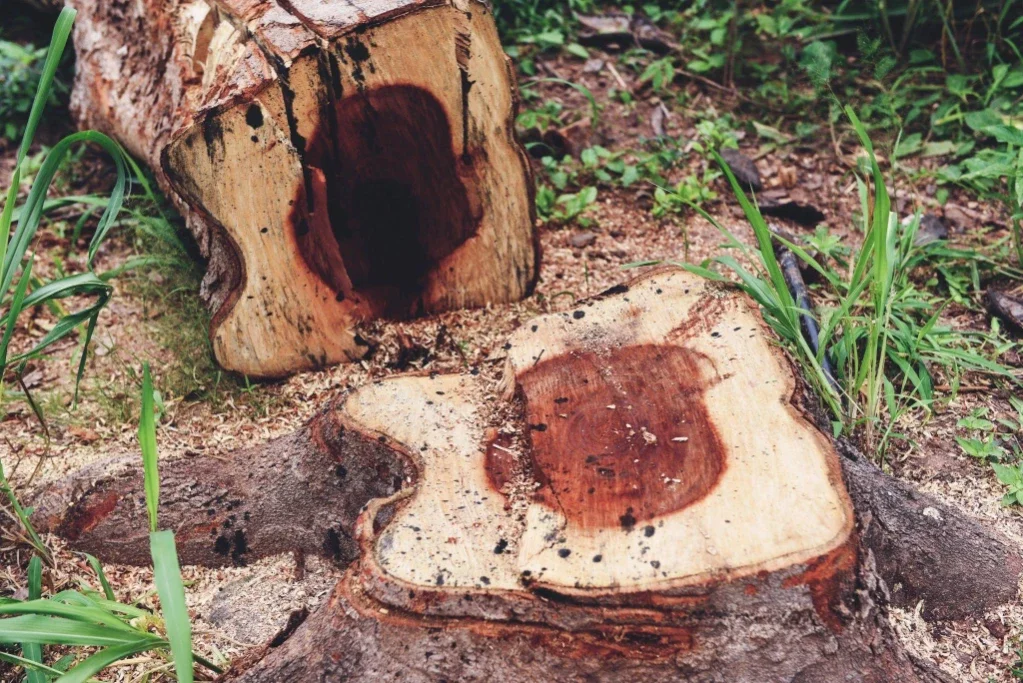How to Plant and Maintain Healthy Shrubs
Learn how to plant and maintain healthy shrubs with our comprehensive guide. Discover tips for selecting the right varieties, planting techniques, watering, pruning, and pest management to create a thriving garden.
Shrubs are the unsung heroes of landscaping. They bring structure, color, and texture to your garden, acting as vibrant backdrops for flowers or serving as standalone focal points. Whether you’re looking to create a privacy hedge, fill in bare spots in your yard, or simply add some greenery, knowing how to plant and maintain healthy shrubs is essential for any gardener.
In this guide on How to Plant and Maintain Healthy Shrubs, we’ll cover everything from selecting the right shrubs for your environment to planting techniques and ongoing care. With a little knowledge and a bit of effort, you’ll be on your way to enjoying a lush and beautiful landscape. So, let’s dig in!
Choosing the Right Shrubs
1. Assess Your Space
Consider Your Landscape: Consider your landscape carefully by assessing factors such as sun exposure and soil drainage. Understanding these elements is crucial when selecting the right shrubs for your garden. For instance, some shrubs thrive in full sun, while others prefer partial shade. Additionally, well-drained soil is essential for healthy root development. By evaluating your environment, you can make informed choices that will enhance the beauty and vitality of your garden.
2. Know Your Zones
Check Hardiness Zones: Check your USDA hardiness zone to understand which shrubs will thrive in your specific climate. Different shrubs have varying tolerance levels to temperature extremes, so familiarizing yourself with your zone ensures that you select varieties well-suited for your area's conditions. By choosing plants that are naturally adapted to your environment, you increase the chances of successful growth and vibrant blooms in your garden.
3. Select Based on Purpose
What’s the Goal?: Are you looking for privacy, ornamental beauty, or perhaps low-maintenance plants? Identifying your goal will help you narrow down your options. Here are some popular choices:
For Privacy: Arborvitae, boxwood, or Leyland cypress.
For Blooms: Hydrangeas, lilacs, or azaleas.
For Low Maintenance: Junipers or barberries.
4. Consider Growth Patterns
Know Their Size: Know the expected size of the shrubs you’re considering by researching their mature dimensions. Some varieties may spread wide, while others grow tall and narrow. Understanding their growth habits will help you plan accordingly and avoid overcrowding in your garden. By spacing shrubs appropriately, you allow each plant to thrive, ensuring they have enough room for healthy growth and airflow, ultimately enhancing the beauty of your landscape.
How to Plant and Maintain Healthy Shrubs
Step 1: Prepare the Site
1. Choose the Right Location
Pick Your Spot: Pick your planting spot carefully after selecting your shrubs, ensuring it meets their specific sun and moisture requirements. Consider factors such as shade from nearby trees or structures and the drainage characteristics of the soil. By choosing the right location, you can provide your shrubs with the ideal environment to thrive, promoting healthy growth and vibrant foliage that will enhance the overall beauty of your garden.
2. Clear the Area
Remove Debris: Remove debris by clearing away grass, weeds, and any other materials from the planting area. Starting with a clean slate is essential, as it helps prevent competition for nutrients and ensures your newly planted shrubs have the best chance to establish themselves. By preparing the soil properly, you create an ideal environment for growth, allowing your shrubs to flourish and contribute to the beauty of your garden.
3. Test the Soil
Check for Quality: Before planting, it’s a good idea to test your soil for pH and nutrient levels. This will guide you in any necessary amendments. Most shrubs prefer slightly acidic to neutral soil (pH 6.0 to 7.0).
Step 2: Digging the Hole
1. Size Matters
Dig Deep and Wide: When planting shrubs, dig a hole that’s twice as wide and the same depth as the root ball. This approach provides ample space for the roots to spread out, promoting healthy growth and stability. A wider hole allows for better soil aeration and drainage, which are crucial for the roots to establish themselves and absorb nutrients effectively, leading to vibrant and thriving shrubs in your garden.
2. Loosen the Soil
Break Up the Dirt: Break up the dirt at the bottom of the hole to loosen the soil, making it easier for the roots to penetrate and establish themselves. This step is crucial as compacted soil can hinder root growth and water absorption. By ensuring the soil is well-aerated, you promote healthier root development, allowing your shrubs to thrive and adapt more effectively to their new environment.
Step 3: Planting the Shrub
1. Position the Shrub
Set it Right: Carefully remove the shrub from its container, being cautious not to damage the roots. Place the shrub in the center of the hole, ensuring the top of the root ball is level with the surrounding soil.
2. Backfill the Hole
Fill it Up: Fill the hole gently with the original soil, taking care to eliminate any air pockets that may disrupt root growth. As you backfill, consider mixing in compost to enrich the soil around the roots, providing essential nutrients for your shrubs. This practice not only enhances soil fertility but also encourages healthy root development, helping your plants establish a strong foundation for vibrant growth in your garden.
3. Water Thoroughly
Give it a Drink: Give the newly planted shrub a generous drink of water to help settle the soil around the roots. This step is crucial for establishing strong root systems, as it eliminates air pockets and provides the moisture needed for initial growth. Ensure the water soaks deeply into the soil, promoting healthy hydration and encouraging the shrub to adapt to its new environment effectively, setting the stage for vibrant growth.
Step 4: Mulching
1. Add Mulch
Cover Up: Cover the base of the shrub with a 2-3 inch layer of mulch to enhance its growing conditions. Mulch helps retain moisture in the soil, suppresses weed growth, and regulates soil temperature, creating a stable environment for your plant. Additionally, as the mulch breaks down, it adds organic matter to the soil, further enriching the area around your shrub and promoting healthy growth.
2. Keep Away from the Stem
Avoid Contact: Avoid allowing the mulch to come into direct contact with the stem of the shrub, as this can lead to rot and other health issues. Instead, maintain a small gap between the mulch and the stem to promote proper air circulation and moisture control. By ensuring this separation, you help protect the plant's health, allowing it to thrive without the risk of decay at its base.
Step 5: Watering
1. Establish a Watering Schedule
Consistency is Key: Newly planted shrubs need regular watering. Aim to water deeply at least once a week, adjusting for rainfall and hot weather.
2. Check for Moisture
Feel the Soil: Feel the soil by sticking your finger about an inch deep. If it feels dry, it’s time to water your shrub. However, be cautious not to overwater, as excessive moisture can lead to root rot and other issues. Monitoring the soil's moisture levels regularly helps ensure your shrub receives the right amount of hydration for healthy growth while preventing any potential damage from waterlogged conditions.
Step 6: Fertilizing
1. Initial Feeding
Nourish Wisely: Fertilize your shrubs with a balanced fertilizer (like a 10-10-10 mix) during the growing season. Follow the package instructions for the correct amount.
2. Seasonal Feeding
Routine Care: Routine care is essential for the health of your shrubs. Depending on the variety, consider fertilizing in spring and again in late summer to promote robust growth and vibrant blooms. Use a balanced fertilizer appropriate for the specific type of shrub to ensure optimal nutrient uptake. Regular fertilization helps replenish essential nutrients in the soil, supporting your shrubs throughout their growing season and enhancing their overall vitality.
Step 7: Pruning
1. Understand the Need
Why Prune?: Pruning helps shape shrubs, encourages new growth, and removes any dead or diseased branches. It’s essential for maintaining the health and appearance of your plants.
2. When to Prune
Timing is Everything: The best time to prune depends on the type of shrub. Generally, spring-flowering shrubs should be pruned immediately after flowering, while summer-flowering varieties can be pruned in late winter or early spring.
3. Pruning Techniques
Cut Smart: Use clean, sharp pruning shears. Make cuts at a slight angle and above a leaf node to encourage new growth.
Step 8: Pest and Disease Management
1. Monitor for Pests
Stay Vigilant: Stay vigilant by regularly inspecting your shrubs for pests like aphids, spider mites, or scale. Early detection is crucial for effectively managing infestations before they cause significant damage. Look for signs of pest activity, such as discoloration, webbing, or sticky residue on leaves. Prompt action, whether through natural remedies or insecticidal treatments, can help protect your shrubs and maintain their health and vitality in your garden.
2. Manage Diseases
Look for Symptoms: Watch for signs of disease, like wilting leaves or unusual spots. Treat with appropriate fungicides or insecticides as needed, following label instructions.
Step 9: Seasonal Care
1. Winter Protection
Shield from the Cold: In colder climates, consider wrapping delicate shrubs with burlap or using mulch to protect roots from freezing temperatures.
2. Summer Maintenance
Keep It Hydrated: During hot summer months, be extra diligent with watering. Shrubs can dry out quickly, especially if they're newly planted.
Conclusion
Growing and caring for healthy shrubs is an enriching experience that can transform your garden into a beautiful oasis. In this How to Plant and Maintain Healthy Shrubs guide, we’ve covered everything from choosing the right location and soil to watering, fertilizing, and pest management.
With just a bit of attention and care, you can enjoy a vibrant and lush landscape filled with healthy shrubs that enhance your outdoor space. So, roll up your sleeves, grab your gardening tools, and get started on your journey to creating a thriving garden! Happy gardening!
Frequently Asked Questions
1. How often should I water my shrubs?
Water your shrubs deeply about once a week, adjusting for rainfall and the specific needs of the plant. New shrubs may require more frequent watering until established.
2. Can I grow shrubs in pots?
Absolutely! Many shrubs adapt well to container gardening. Just ensure your pot has proper drainage and use high-quality potting soil.
3. What should I do if my shrub looks unhealthy?
Inspect for signs of pests or disease and address any issues. Sometimes a simple change in watering habits or fertilizer can also make a difference.
4. When is the best time to plant shrubs?
Spring and fall are generally the best times to plant shrubs. This allows them to establish roots before facing the stresses of extreme heat or cold.
5. How can I tell if my shrub needs pruning?
If you notice dead or diseased branches, excessive growth, or an unshapely appearance, it’s likely time to prune. Regular maintenance will keep your shrubs healthy and looking their best.

































